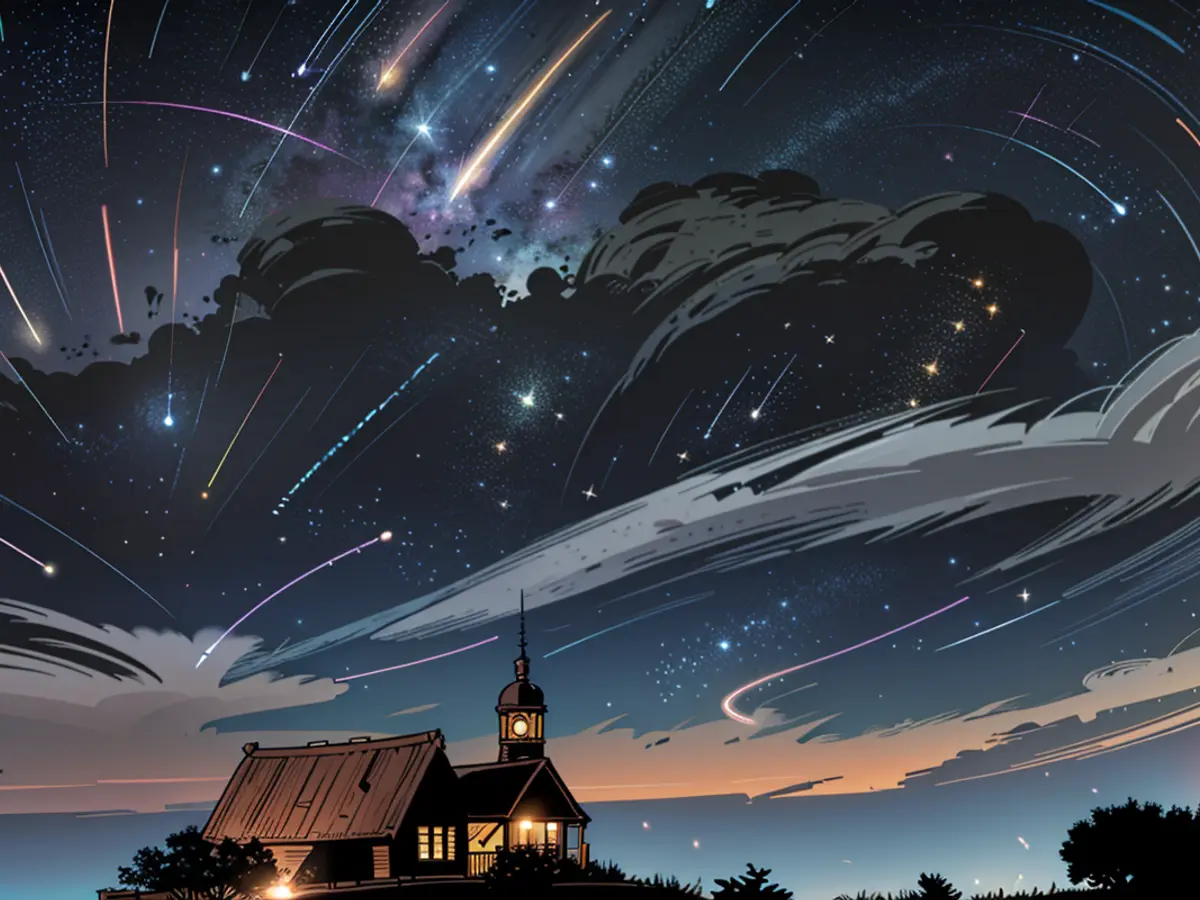Heavens spectacle - Several meteor showers in the night sky
Skygazers have a good chance of Meteor Showers in the coming weeks with several meteor showers, including the Perseids, Delta-Aquariids, and Eta-Eridanids, passing through our atmosphere. The first two streams are already active, according to the International Meteor Organization, although they are still a bit away from their maximum. Not all three showers have the same chances of observation even with good weather, the Association of Star Friends noted in response to an inquiry from the German Press Agency.
The Spectacular Shower
The most famous meteors are the Perseids. They reach their maximum on the evening of August 12. "This time is not particularly favorable for observation: The Moon is in the sky and doesn't go down until 23 hours," shared the chairman of the Star Friends, Uwe Pilz. The radiant, or the point from which the Perseids come, is at its highest at the end of the night. "Therefore, I recommend observation during the second half of the night. From a dark location, one can expect 20 to 30 meteors per hour," Pilz added. The constellation Perseus, from which the Perseids originate, is located in an easterly direction on the morning horizon.
Their true cause is that the Earth, in its orbit around the Sun, crosses the orbit of Comet 109P/Swift-Tuttle and encounters the particles it has scattered. These particles then burn up as shooting stars when they enter the Earth's atmosphere.
Broad Maximum
The Eta-Eridanids can be seen with luck in several nights. They have a broad maximum, according to the Star Friends, with a peak on August 8. In the first half of August, the Moon does not interfere. And the hours after midnight are more suitable because the constellation Eridanus, from which they originate, is higher in the sky. However, Pilz noted that this stream is very weak. "From a dark location, one can observe one to two of these shooting stars." Eridanus is located deep in the south-east on the morning horizon.
Low Chances
The Delta-Aquariids, according to the Star Friends, have two peaks on July 30 and August 13, almost coinciding with the Perseids. The radiant is quite low, which means they will likely be observed on the Southern Hemisphere. With careful observation, however, some few meteors per hour could be seen. The constellation Aquarius, from which they originate, is at its highest on the morning horizon against 2:00 hours when the second maximum occurs, and the Moon does not interfere then.
- Despite the active Delta-Aquariids and Perseids meteor showers, the Eta-Eridanids in Germany have low chances of being observed due to their weak intensity, as mentioned by Uwe Pilz from the Association of Star Friends.
- The German city of Bensheim will also provide a great opportunity to witness the current Shooting Stars Current, as the night sky is expected to be filled with these celestial phenomena within the coming weeks.
- Astronomers and stargazers worldwide agree that the heavens will present a spectacular spectacle for those interested in science, particularly germane to the field of astronomy, as a multitude of meteors are predicted to streak across the night sky.
- One of the most captivating celestial events to occur in the coming nights is the Heavens Spectacle of the Perseids Meteor Shower, a spectacle that occurs annually, with its peak occurring on August 12.
- The German Press Agency reported that even with good weather conditions, not all meteor showers, such as the Delta-Aquariids and Eta-Eridanids, have the same chances of observation, causing some disappointment among skygazers eager to witness the majesty of shooting stars in the night sky.
- Observing the night sky on a seagull's perspective would provide a unique perspective, as one might be able to spot various meteors streaking across the sky during a meteor shower, including the current Shooting Stars Current.







